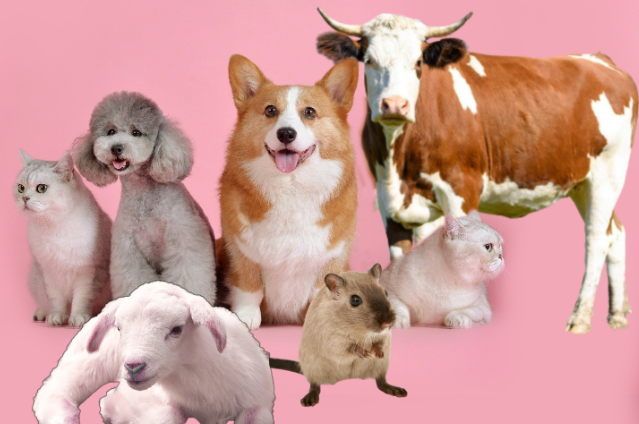
The start of the holidays is always sublime. A trip to the countryside is the best way to unwind on vacation. You can hear nature with the tranquillity and lushness of the environment, the abundance of natural beauty, and the clean fragrance of the air. All these can make anyone feel rejuvenated. While describing a village scenario, we often visualise the image of mud huts, large open fields, chirping birds, and a herd of animals. Milking cows and goats can be a common sight. Waking up to the call of roosters and having fresh eggs for breakfast, the ponds with water lilies and playing ducklings, the flock of white sheep in the middle of a green field—the view is enchanting. Cows, goats, ducks, hens, cats, dogs, etc., all fall into the category of domestic animals.
What exactly is a domestic animal?
Domesticated animals have been bred deliberately, and their genetics have been modified from their original wild ancestors so they can coexist with humans. Biologically, they can't be traced back to their wild relatives.
Domestic animals in rural and urban areas:
Distinct differences in animal domestication can be seen between rural and urban regions. Domestic animals such as cows, goats, lambs, roosters, etc., can be kept in rural areas and on the fringes of cities. In small isolated communities and on the outskirts of metropolitan areas, there is room for domestic animals like cows, goats, sheep, roosters, etc. Here, the land is plentiful enough for an urbanised man to keep animals for commercial purposes, in the yard, and as household pets.
On the other hand, some animals adjust well to city life. For example, squirrels do amazingly well living in cities. For example, smaller animals have more general diets, are more intelligent or adaptable, and are especially good at city life—for example, dogs, cats, rabbits, etc.
The wild animals
From the beginning of time, we've relied on wild animals for various essential services. From the tiniest of lizards to the heaviest of birds and everything in between, the world is home to different wild creatures. Each of these creatures has its unique challenges when taming or simply coexisting with it. All animals in the wild, whether predators or prey, engage in social interactions and exhibit behaviours like hunting that have been passed down from generation to generation. One can find some of the world's most stunning and incredible-looking animals in the wild.
Grouping of domestic animals and pathways for wild animals:
The domestication of animals can be grouped down into three categories: those kept as pets (like dogs and cats), those raised for food (like sheep, cows, pigs, turkeys, etc.), and those used as labour or draught animals ( horses, donkeys, camels, etc.).
People have worked hard since the Neolithic era to tame and use a wide range of wild animals for things like food (milk and meat), making money (silk and wool), defence (protection), and transportation (military use).
Three pathways are described for domestication: commensal, prey, and direct.
The commensal pathway involves establishing a relationship between people and wild animals drawn to human-made environments in search of food scraps or small prey. This relationship is good for both people and animals. Animals as diverse as dogs, cats, and chickens have trodden this route.
As local populations of animals like pigs and cattle dwindle, people move down the prey pathway and begin hunting them for food. Eventually, these game management methods led to intentionally breeding endangered species.
Along the direct pathways, people tamed wild animals like horses, camels, and donkeys to control their migrations, diets, and a number of offspring. This led to a sharp drop in the wild animal population.
Animals - from wildlife to domestication:
Domestication is a form of artificial selection that results in profound phenotypic changes in the behaviour and physiology of domesticated animals. The simultaneous occurrence of these changes across multiple locations profoundly affected human societies. In addition to its long duration, the radical technological and economic shifts associated with domestication—from foraging to farming—are well documented. It depends on many important things, like a big change in the population, making and farming desirable domesticated animals, and big changes in society and spirituality.
Archaeological evidence shows that domestication of animals occurred over long periods and was driven by selection pressures caused by accidental and intentional human actions and by human-influenced surroundings. Domestication of animals is thought to be a multi-step process that results in significant behavioural, morphological, and physiological changes in domesticates compared to their wild forebears.
Most physical and behavioural differences between domesticated and wild animals may be traced back to selective breeding and consistent animal husbandry. The varying genetic compositions of breeding populations are also a product of these processes.
Over the past 11,500 years, animal domestication—the rapid, artificial, and systematic selection of wild animals—has impacted the Earth's ecology, shaped human evolution, and affected human population size. Cultural shifts from hunting to farming in ancient societies laid the groundwork for domestication. Archaeological evidence showed when animals were first domesticated, and these times match up with selection factors caused by human actions and ecosystems that humans have changed.
Domestication studies
Scientists from many fields have been interested in domestication because it is important for making evolution models and population changes.
Darwin's theory of evolution was based on how the phenotypes of domesticated animals changed over time. This led to several questions that need to be answered in future research, such as when, where, and how these animals became domesticated and what genes were involved in this process. Darwin's first ideas, which he wrote about in "On the Origin of Species," and his ideas about how animals change when they are domesticated, started a debate that is still important today. Most domesticated animals have undergone two stages of evolution: an ancient domestication event, where a wild ancestor was turned into a domesticated species, and a modern breeding process.
Since Darwin, scientists have been interested in the history of how animals were brought into homes. To find out where the species was first domesticated, it is essential to find out who their ancestors were and where they were domesticated. Several studies from different fields have looked at the process of domestication. To understand how civilisations started and domesticated species changed over time, it is essential to study when, where, and how domestication happened. It's hard to explain how humans and domestic animals came to be, and we still don't know much about the genetic changes that occurred when animals were first domesticated. Current and possible uses of evolutionary biology may help solve some of society's biggest problems. It is essential to look at the relationship between the environment and the traits of organisms that have changed because they have adapted to modern settings and the patterns of selection their environments caused during domestication. Once an animal was domesticated, several things happened, like gene flow and selective pressures, which led to changes in the genome and how the animal looked.
Domestication and Evolution:
Domestication has been at the centre of interdisciplinary scientific research, and traits that help organisms live longer or reproduce better are selected and passed on to the next generation to increase the number of organisms in the population. Since 2006, it has been possible to study domestication by looking at the whole genome sequence. This has led to the discovery of selection in many genomic loci that likely changed over time because of selective pressures. Several studies show how genes involved in brain and neuronal development work. They also suggest that domestic animals evolved by accumulating a lot of small mutations instead of significant changes in a few loci. Strong animal husbandry practices and controlled breeding have changed how domestic animals act, look, and their genes differ from their wild ancestors.
The transition from hunting to farming in ancient societies during the Neolithic period is thought to have been the start of domestication, with the possible exception of dogs, which were the first animals to be kept as pets and were domesticated in different places and at different times than other species. Archaeological clues helped figure out when animals were first domesticated. These times were influenced by human activities and environments that humans had changed. In the last few years, much research has been done on how animals become domesticated, and now it is possible to figure out when different animals become domesticated.
To find out where the species was first domesticated, it is essential to find out who their ancestors were and where they were domesticated.
Dogs
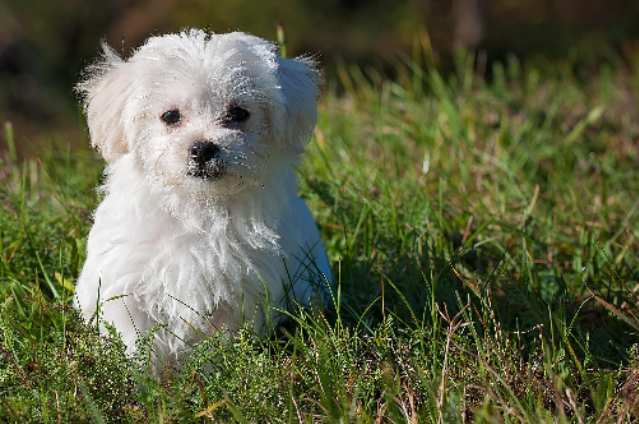
| COMMON NAME | DOGS |
| SCIENTIFIC NAME | Canis familaries |
| TYPE | Mammals |
| DIET | Omnivore |
| GROUP NAME | Pack |
| AVERAGE LIFE SPAN | 12 years |
| SIZE | 5 to 35 inches around the shoulder |
| WEIGHT | 3 to 200 hundred pounds |
Before the internet, the Industrial Revolution, literature and mathematics, bronze and iron, and agriculture, early humans developed an unusual alliance with another animal—the grey wolf. The fates of the two species were intertwined. The wolf's bodies and temperaments transform. Their teeth, skulls, and paws shrank. Their ears were floppy. They developed a gentle demeanour, becoming less intimidating and scared. They learned to read the complexities of human facial expressions. They evolved into dogs.
Dogs are becoming so commonplace in our lives that they are often referred to as our "best friends." Dogs are magnificent creatures that shower their families with unconditional affection and are ideal companions for humans. They liven up the environment, join you on walks, and can even take a bullet for your safety. Millennia of puppy love has resulted in over 400 domestic dog breeds, ranging from the wolfish, strong Siberian husky to the shrieking, guinea-pig-like chihuahua. There is continuous research into the origins of dogs and their unique sympatric ties with humans.
- Origin of domestication
Dogs were the first animals to be domesticated by humans more than 15,000 years ago. Their wild ancestor was the extinct grey wolf, and even though a lot has been learned about them, there are still questions about where and when they came from and how they became domesticated.
There are numerous areas of origin for dogs in the literature, including Europe, the Middle East, and East Asia. More recently, a study argues that dogs may have been domesticated independently in Eastern and Western Eurasia from various wolf populations. Later, the eastern dogs accompanied humans through their dispersal to Western Europe, where they supplanted the Western Eurasian and European Paleolithic canines. The same event occurred with American dogs that arrived with human expansion.
- Wild Ancestors
The grey wolf is regarded by most scientists to have given rise to the domestic dog, a significant event in the evolution of our species that may have occurred as early as 32,000 years ago and certainly by 14,000 years ago. Some experts, however, have argued, due to several physical distinctions between dogs and wolves, that dogs may be descended from an extinct wild ancestor that likely resembled present pariah dogs and dingoes. No matter where it came from, the dog was the first animal that early humans brought into their homes.
- Do you know?
Here's a fun story about a dog.
Tuscan Prime is a stray dog who "works" at a Hyundai car dealership in Brazil as an "employee." Tuscan would sit in front of a Hyundai showroom in Serra, Brazil until the people who worked there noticed him. Soon after making friends with the workers, he became part of their family. He now works for Hyundai and has an ID card to prove it. Tuscan Prime is now a sales dog with 182k followers on Instagram.
Cattle
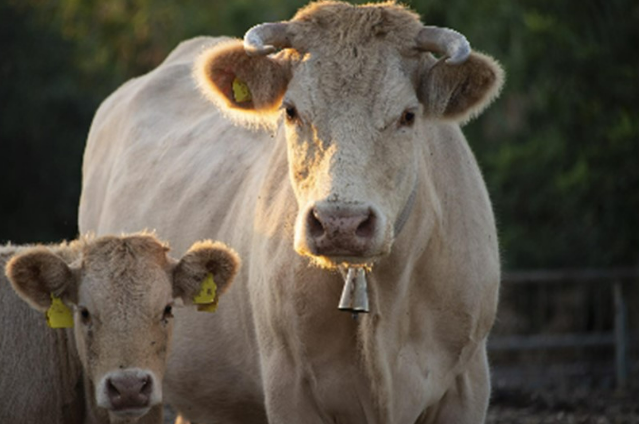
| COMMON NAME | CATTLE |
| SCIENTIFIC NAME | Bos taurus |
| TYPE | Mammals |
| DIET | Herbivores |
| GROUP NAME | Herd |
| AVERAGE LIFE SPAN | 15–20 years. |
| SIZE | 62.0"-69.0" inches |
| WEIGHT | 1000–4,000 pounds |
Cattle have a special place in human history. They have been kept as pets since the beginning of the Neolithic age. Since the first cattle were domesticated more than 10,000 years ago, they have helped people move from nomadic hunter-gatherer societies to settled farming communities in much of Europe, Asia, and Africa. Cattle are often raised as livestock for their meat (beef or veal; see beef cattle), milk (see dairy cattle), and hides, which are used to make leather. They are used for riding and pulling things (oxen or bullocks, which pull carts, ploughs, and other implements). Cattle also leave behind waste, which can be used to make manure or fuel. In some parts of India, cattle are important to religion. Cattle are kept as pets, primarily small breeds like the Miniature Zebu.
- Origin of Domestication
The now-extinct aurochs gave rise to cattle. Cattle may have been domesticated more than once, like many other animals. About 10,500 years ago, the first animals were domesticated in what is now Iran. The Indian subspecies of Bosprimigenius gave rise to the zebu, also called the Brahmin, about 6,000 years ago. African cattle come from the first line. Later, they were crossed with the indices type, which has a hump and is better suited to hot climates.
There are now more than 800 breeds, but most breed organisations only recognise a small number. They are either of the Taurus or the Inde type, or they are a mix of the two, like the Santa Gertrudis breed from Texas, which is a mix of the two. Some estimates say there are about 1.5 billion cattle worldwide, so it doesn't look like people will stop using bovine products soon. Different parts of the world have different kinds of cattle. Most taurine cattle live in temperate regions of Europe, Asia, the Americas, and Australia. Zebus also called "indicine cattle," are primarily found in India and the tropical parts of Asia, the United States, and Australia. Most Sanga cattle live in Africa, south of the Sahara Desert. These types, sometimes considered different species or subspecies, are further broken down into over 1000 breeds.
- Wild Ancestors
The aurochs are the wild ancestor of cattle. Aurochs were all over the world for a long time. Scientists have figured out that the oldest auroch bones are from about 2 million years ago. India is where they were found. People and aurochs lived together for a long time, and there is evidence that domestication started between 10,000 and 8,000 years ago.
The wild ancestor of cattle was one of the enormous herbivores that lived in Europe after the last ice age. The animals were about the same size as European bison, though the size of an aurochs changed from place to place. The animals in the north grew more extensively than the ones in the south. These animals were big and strong. They had long horns, long legs, and dark coats.
- Do you know?
Cattle are sacred in Hinduism, Jainism, Buddhism, and others. Cattle played a critical role in numerous religions, including ancient Egypt, Greece, Israel, and Rome.
Hindus revere the cow. Like other animals, the cow was sacrificed to the gods, and its meat was devoured. From the 4th century BCE, the cow became sacred and revered. It symbolises Mother Earth since its milk nourishes all animals. In legends, Krishna, a Hindu deity, is commonly represented as a cowherd or a cow-protecting toddler.
The cow also represents Lord Shiva. "Nandi" is Mahadev's bull and Kailash's gatekeeper. He's a popular god and Lord Shiva's vehicle. People worship a cow statue in every Mahadev temple. The cow represents Laxmi, the richest goddess. Hindus religiously forbid beef. Some Indian states have banned the killing and consumption of cows through legislation.
Cat
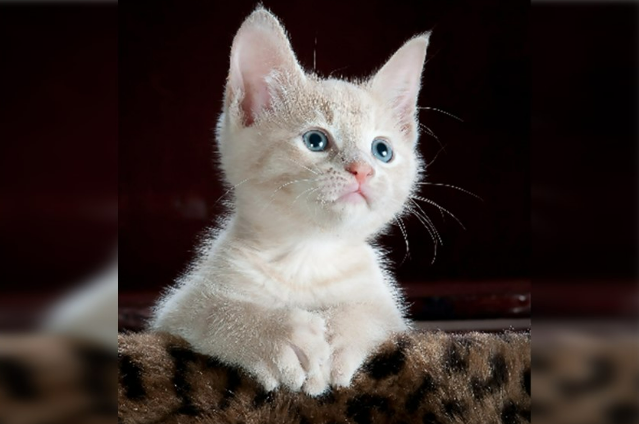
| COMMON NAME | CAT |
| SCIENTIFIC NAME | Felis catus |
| TYPE | Mammals |
| DIET | Carnivore |
| GROUP NAME | Clowder |
| AVERAGE LIFE SPAN | 12 – 18 years |
| SIZE | 28 Inches |
| WEIGHT | 5 to 20 lbs |
Felis catus is well-known to humans. The ancient Egyptians believed that cats were divine and mummified them together with mice for the afterlife. Cats have become friends in many cultures. Cats are carnivorous, with a rudimentary digestive system adapted to digest raw meat. Their rough tongue helps them clean animal bones—the diet of cats changes with human whims and hunting achievements. Cats can hear well, and their long tails help with agility and balance.
- Origin of domestication
The domestic cat and its wild cousins originated around 130,000 years ago.
Four thousand years ago, the Egyptians domesticated cats. Rodents likely lured wild cats to human settlements. Humans may have initially appreciated cats' killing skills. Cats and humans coexisted in early human communities but were likely feral cats. True cat domestication was considered to have begun in Egypt 3600 years ago. Skulls of cats unearthed in Egyptian cat burial mounds (named Mau by the Egyptians) have generally been identified as Felis sylvestris lybica. This wild cat lived in Asia and North Africa and is now regarded as the significant ancestor of the modern-day Felis catus. Recent evidence suggests feline domestication occurred 10,000 years ago in the Fertile Crescent. The earliest factual evidence of domestication is a cat found with its owner in a Cyprus cemetery 9500 years ago. Domestication likely began before this, given there were no native cats in Cyprus.
- Wild Ancestors
Domestic cats are descended from a single wild ancestor, whose ancestors still dwell in the Middle Eastern deserts. Domestic cats are natural hunters with keen claws and teeth like wild relatives. Their light-reflecting eyes help them see better at night than most prey. New DNA evidence reveals a deadly predator became a gentle tabby 10,000 years ago. That's when humanity began farming in the Fertile Crescent. The earliest friendly cats probably hunted mice in grain storage.
Felis catus evolved from domesticated wildcats. Cat domestication isn't like dogs and other animals. Domestic cats haven't changed much from their wildcat predecessors' form or behaviour. They can survive in the wild, and many do. Early Neolithic farmers transported goats, sheep, cattle, and dogs from the Fertile Crescent 7,000 years ago. They didn't know the Near Eastern wildcat was hitchhiking. When migrants arrived in Poland 6,000 years ago and converted woodlands into pastures and farms, mice and wildcats—an ancestor of our domestic cat—settled in. The first wildcat skeletons from the Near East were found in four Polish caves near early farming villages.
All domestic cats descend from the Near Eastern wildcat, domesticated 10,000 years ago.
- Do you know?
According to Egyptian mythology, gods and goddesses might turn into animals. Only Bastet could turn into a cat. People travelled far and wide to see the temple in Per-Bast. Various cultures value different animals. Cats were considered exceptional because of their ability to hunt and guard. The Egyptians believed cats were beautiful, lucky creatures. Rich folks adorned their pets with jewellery and offered them regal goodies. Mummified cats died. Those who accidentally killed cats were executed.
In certain places, it's good luck. Black cats are lucky in Britain, Germany, Ireland, and Japan. But in India and some western countries, black cats are considered unlucky. In India, black is associated with Lord Shani; hence, it's bad luck. According to astrology, Lord Shani may advise you not to go outside, or the work may be delayed. How did this myth start?
In ancient times, when people travelled late at night in bullock carts, cows and horses would stop when they saw jackals and hyenas. Travellers would halt so horses could breathe. Travellers shared their tales, and the tradition continued.
Sheep
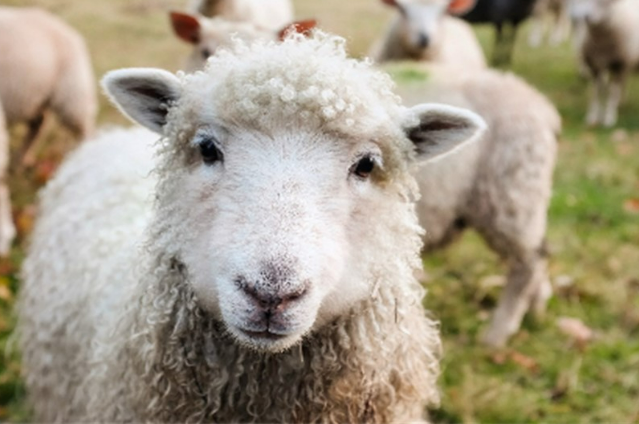
| COMMON NAME | SHEEP |
| SCIENTIFIC NAME | Ovis aries |
| TYPE | Mammals |
| DIET | Herbivore |
| GROUP NAME | Flock |
| AVERAGE LIFE SPAN | 10–12 years |
| SIZE | 1.2-1.8 m |
| WEIGHT | 160-180 lbs |
Sheep were the earliest domesticated animals. These sheep were primarily raised for meat, milk, and skins. Woolly sheep appeared in 6000 BC. Trading brought them to Africa and Europe. Sheep are recognised by their Latin name, Avis Aries, and their raising is essential to every economy. People have been improving this activity for thousands of years to make their breeding features better.
Ten thousand years ago, overhunting reduced the wild sheep population. People came up with an approach to tackle the decline of this essential resource: domesticating wild sheep. Originally, sheep were raised for meat. Later, sheep were used for breeding milk, leather, and wool.
- Origin of domestication
Since domestication, sheep have been cultivated worldwide due to their adaptability. According to a study, many sheep breeds resist environmental changes, including day length, seasonality, UV, precipitation, and humidity. Domestication can be seen in breeding features, including ewes without horns, smaller bodies, and high percentages of young animals.
In 4000 BC, Babylonians started wearing wool clothing (also known as the Land of Wool). The Spinning Wheel was invented in 1200 AD. Columbus brought sheep to Cuba in 1493 and Cortes to Mexico in 1549. Some believe that sheep from these flocks ended up in the southwest, where they started Navajo weaving. In 55 BC, sheep were imported to the British.
In 1600, England banned the import of sheep to America to control the colonies' textile output. During this time, wool accounted for about 2/3 of England's exports. First, domesticating sheep helped improve civilization. Second, sheep are fundamental to many tales, such as Jason and the Golden Fleece. Sheep are important in many religions and cultures.
Sheep production is one of humankind's oldest industries. Wool was the first valuable commodity to boost international trade. Sheep's wool was a significant product in Iran and other Persian societies around 6000 BC. Later, Africa and Europe imported them.
- Wild Ancestors
Ovis aries is related to the mouflon found in Asia. Some sheep breeds, like Scotland's Castlemilk Moorit, were developed by breeding domestic sheep with wild European mouflon. As urials occasionally produce mouflon in the Iranian part of their habitat, this led to the theory that they were the ancestors of domestic sheep. Phylogenetic studies have failed to uncover any evidence of urial ancestry. The specific number of chromosomes in the urial, argali, and snow sheep from other Ovis species makes a direct relationship unlikely.
Assuming that isn't a tautology, the ancestors of the Ugg boot and shearling jacket can be traced back to a wild sheep population brought down from the highlands some ten thousand years ago. Older archaeological sites have more bones from younger animals, which suggests that these animals were killed for their hides and meat instead of their wool. This means that wool-producing animals didn't exist until a few thousand years later.
- Do you know?
Recent research has demonstrated that sheep are an intelligent species capable of producing superior offspring. A study conducted at Cambridge University found that sheep could be taught to recognise human faces in photographs. In some situations, the sheep could even correctly match their caretaker to a picture of themselves.
Sheep have the potential to serve as a model for the research of neurodegenerative diseases like Huntington's because of their size and longevity. Though researchers were familiar with how sheep's brains develop, they lacked data on the animals' innate capacity to distinguish human faces. According to the experts, we share this quality with monkeys. Sheep have sophisticated facial recognition abilities on par with humans and monkeys, thanks to brain size and complexity comparable to those of primates.
Mouse
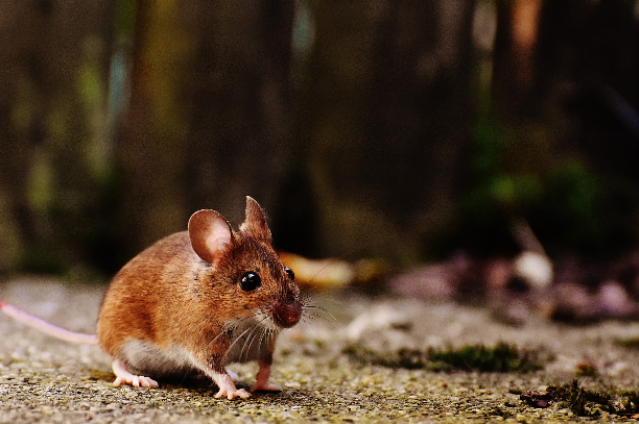
| COMMON NAME | MOUSE |
| SCIENTIFIC NAME | Mus muculus musculus |
| TYPE | Mammals |
| DIET | Omnivore |
| GROUP NAME | Horde |
| AVERAGE LIFE SPAN | UP TO 2 YEARS |
| SIZE | 5 ½ to 7 INCHES SIZE |
| WEIGHT | 19 gm |
Every kid from the 1990s remembers Stuart Small, the iconic film about the life of Stuart, the little white mouse that lived in New York with his family. Many of you may find the thought of having a mouse as a pet strange and even insane, but love comes in all shapes and sizes, right?
Most people are all too familiar with house mice. Crumb's eaters, cord gnawers, and infestation leavers are all names for them. They are to blame for the screech we hear at night and the chaos we discover in the morning.
Mus musculus, the house mouse, has been intricately intertwined with people since the beginning of time—mice could be found wherever cultivated food was stored. Since the mouse is used as a model animal in most fields of study, it has led to many advances in biology in the 20th century.
- Origin of Domestication
Although this period is controversial, mouse and human lineages diverged around 75 million years ago. A common belief is that once humans mastered farming, mice and humans began living peacefully together. But recent discoveries suggest our connection with these rodents may be much older.
Scientists estimate that house mice have coexisted with humans for almost 15,000 years, making them the longest-living domesticated animal. In this sense, some argue that house mice are the earliest "domesticated" animals. Domestication of mice as pets was common in China and Japan by the 1700s. The Europeans brought the mice they liked to the Americas and bred them with those already there.
The relationship between the house mouse and people is an example of commensalism when an animal learns that interacting with people can be good for it.
- Wild Ancestors
House mice evolved from their wild ancestors 15,000 years ago, when people began farming and gathering food.
The progenitor of mice and humans coexists with dinosaurs. A rat-like species roamed the Earth 65 million years ago. Huge dinosaurs ruled the Earth then and would have eaten any little creature they grabbed. One or more asteroids or comets collided with Earth's surface quickly, ending the dinosaur age.
Rats and "genuine" mice evolved in Southeast Asia and India. Mice and rats split from a common ancestor and established the genus Mus. Since then, the Mus genus has splintered into many species in India and adjacent regions. By 10,000 years ago, the progenitors of the house mouse (Mus musculus) had split into four populations. These populations must have had nonoverlapping ranges around India. The castaneus group was in Bangladesh, the castaneus group was on the steppes of modern-day Pakistan to the west of India, the musculus group may have been in Northern India, and Bactrianus stayed in India.
The house mouse couldn't live with humans until agricultural settlements formed. Mice from the domesticus group in Pakistan moved to the fertile crescent after this jump in civilisation. Mice from the musculus group may have gone to China, and bactrianus and castaneus animals moved from the fields to nearby communities in India and Southeast Asia, respectively.
Later, domesticus and musculus house mice came to Europe. Domesticus animals went to Southwestern Europe with farmers from the Middle East, and mice and people quickly got to the Mediterranean basin and North Africa by boat.
- Do you know?
Mice have much better hearing than humans. Ultrasonic frequencies up to 90 kHz have been detected in mouse ears. As a bonus, they can sing love songs to each other across ultrasonic waves.
A researcher found that the high-pitched noises emitted by mice and other small rodents can be interpreted as music. Male mice hunt their females during courtship. The mouse can not only play calming tunes but also learn new songs and play them in various keys. Scientists found that male mice who shared a home learned to sing in unison, all at the same pitch, rather than in the traditional three-part harmony. Like humans, mice have a dedicated brain region for making sounds. However, we can't hear their tunes because they're ultrasonic.
Tickle a rodent, and it will laugh just as heartily. The mice can also sense each other's pain (or at least recognise it in one another's looks).
Scientific Investigations and Studies of the Domestication Process
Domestication has attracted scientists as a paradigm of evolutionary and demographic change. DNA was extracted from samples of a specific species (from various locations, breeds, and populations) and used to amplify and sequence mitochondrial genome control regions. Also, phylogenetic trees and haplotype networks were established. Mitochondrial DNA (mtDNA) is utilised to research population growth, genetic diversity, and phylogenetic structure since it is highly variable within species. However, these sequences are taken from the maternally inherited genome and have little power to identify and quantify hybridisation. This strategy was used for dogs, pigs, horses, and cattle, but it didn't reveal anything about their domestication process. Some writers say selective breeding may weaken mtDNA signatures between domesticates and their ancestors. Quantitative trait loci (QTL) mapping has been used to locate domesticated genes. These analyses have improved foxes, chickens, pigs, and cattle domestication.
The sequencing of the pig, cow and dog genomes has made genome-wide association analyses (GWAS) a practical approach for studying genomic areas involved in traits of relevance in domestic animals. This strategy examines the association between genetic markers and attributes in domestic animals. Variation in these features is attributable to selective pressure on a small number of loci in these species. In some domesticated species, GWAS have identified contributing genes for complex characteristics and Mendelian traits with large effect sizes. Adopting genome-wide approaches led to microarray gene expression investigations in the quest for composite phenotypic genes in domesticated animals. Microarray methods are limited because they depend on known probes, which need species-specific markers for accuracy.
NGS has transformed gene expression research by eliminating the requirement for probes for transcripts. RNA-seq, or RNA sequencing, uses NGS's high-capacity reads to characterise the complete transcriptome, including new isoforms and uncharacterised recorded sequences. RNA-seq compares differentially expressed genes in tissue samples, experimental groups, or populations. Using NGS or RNA-seq data, people can be put into groups based on whether they are healthy or sick. This can be done by finding gene connections related to inherited diseases or other genetic traits or mapping genomic loci.
In addition, mtDNA technology was utilised to uncover genomic areas related to crucial phenotypic features and the evolutionary history and origin of domestication in animal species. Since 2000, sequences of mtDNA fragments such as D-loop and cytochrome b regions have been used to analyse the dispersion of dogs, sheep, pigs, cattle, goats, horses, chickens, donkeys, and cats, as well as those with more restricted dispersals, such as water buffalo and zebu cattle. From the parents' point of view, research on mtDNA has given us a look at how animals became pets.
Understanding the genetic basis of phenotypic variability is the goal of genetics. Domestic animals can help close the gap between human biology and traditional model species. High-throughput sequencing technology and contemporary bioinformatics offer an individual's whole genetic variation map, making it possible to test for phenotypic variance caused by SNPs (SNPs). Genome-wide association studies (GWAS) and candidate gene techniques identify genomic areas or genes affecting a particular trait. Population genomics provides a new paradigm for relating DNA to a phenotype called selection signature analysis. This genome-to-phenotype technique assesses population genetic data regardless of phenotype to uncover prior selection targets. Selection analysis can be used in species with a high-density genetic record.
Conclusion
Although many early instances of animal domestication are poorly recorded genetically and archaeologically, a stronger framework for understanding the evolutionary patterns of domesticated animals is developing. After an initial burst of domestication throughout the early Holocene, many additional animals were brought into human society and culture. There were many pathways via which the early co-evolutionary stages of animal domestication occurred. It's worth noting that humans never envisioned the commensal or prey pathways as how animals would be domesticated. In both cases, people got involved with these species because of a stronger connection and because people helped them stay alive and have babies.
Because the important animal domestication experiences only occurred in a small fraction of the ranges of the wild species, the necessary conditions appear to have coincided relatively rarely. Although the genetic changes that preceded the early animal domestication trajectories are not well understood, the effects on economic productivity, population growth, and geographic expansion for humans and their domestic animal partners are hard to overstate. Once this started happening, however, there was a lot of frequent gene flow (or introgressive capture) between domestic animal populations and other wild and domestic species, which often had a significant effect on the genomes and phenotypes of the domestic animal populations.
Animal domestication is a multi-stage process hypothesised to significantly alter domesticated animals' physiology, anatomy, and behaviour compared to their wild ancestors. Domestic animals are indispensable to human society in many ways, and without them, human development would have been much slower. Many species that have been tamed nevertheless have wild relatives. Animals in the wild have changed their size, shape, and behaviour in response to human civilisation. And today, it's safe to say they're an integral component of modern society.
. . .
References:
- Ahmad, H. I., Liu, G., Jiang, X., Liu, C., Chong, Y., and Huarong, H. (2017a). Adaptive molecular evolution of the MC1R gene reveals evidence for positive diversifying selection in indigenous goat populations. 7, 5170-5180, Ecol. Evol.doi: 10.1002/ece3.2919.
- J. Bélteky, B. Agnvall, L. Bektic, A. Höglund, P. Jensen, and C. Guerrero-Bosagna (2018).Early domestication: differences in hypothalamic DNA methylation between red junglefowl divergently selected for high or low fear of humans. 50:13. doi: 10.1186/s12711-018-0384-z.
- Hafiz Ishfaq Ahmad, Muhammad Jamil Ahmad, Farwa Jabbir, Sunny Ahmar, Nisar Ahmad, Abdelmotaleb A. Elokil, and Jinping Chen wrote The Domestication Makeup: Evolution, Survival, and Challenges.
- Greger Larson, The Evolution of Animal Domestication, Annual Review of Ecology, Evolution, and Systematics, October 2014.
